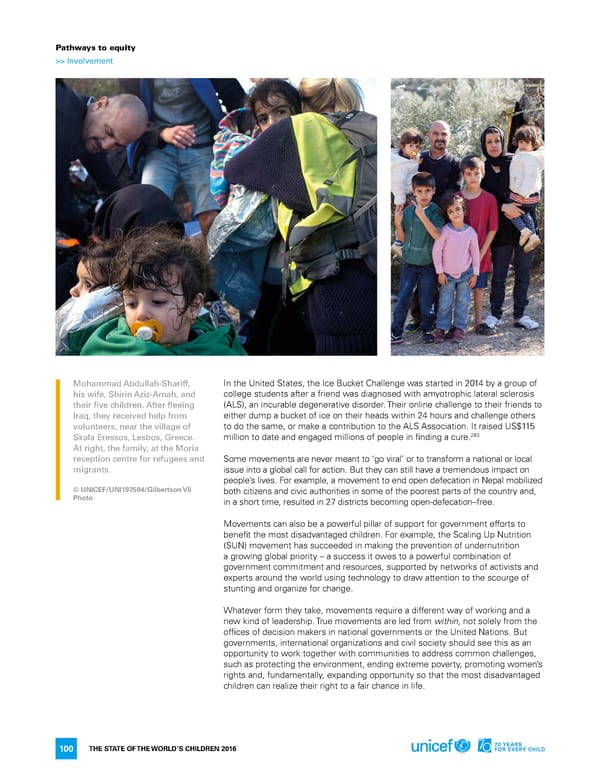Pathways to equity >> Involvement Mohammad Abdullah-Shariff, in the United States, the ice Bucket Challenge was started in 2014 by a group of his wife, Shirin Aziz-Amah, and college students after a friend was diagnosed with amyotrophic lateral sclerosis their five children. After fleeing (alS), an incurable degenerative disorder. Their online challenge to their friends to Iraq, they received help from either dump a bucket of ice on their heads within 24 hours and challenge others volunteers, near the village of to do the same, or make a contribution to the alS association. it raised US$115 283 Skala Eressos, Lesbos, Greece. million to date and engaged millions of people in finding a cure. At right, the family, at the Moria reception centre for refugees and Some movements are never meant to ‘go viral’ or to transform a national or local migrants. issue into a global call for action. But they can still have a tremendous impact on people’s lives. for example, a movement to end open defecation in nepal mobilized © UNICEF/UNI197504/Gilbertson vII both citizens and civic authorities in some of the poorest parts of the country and, Photo in a short time, resulted in 27 districts becoming open-defecation–free. Movements can also be a powerful pillar of support for government efforts to benefit the most disadvantaged children. for example, the Scaling Up nutrition (SUn) movement has succeeded in making the prevention of undernutrition a growing global priority – a success it owes to a powerful combination of government commitment and resources, supported by networks of activists and experts around the world using technology to draw attention to the scourge of stunting and organize for change. Whatever form they take, movements require a different way of working and a new kind of leadership. True movements are led from within, not solely from the offices of decision makers in national governments or the United nations. But governments, international organizations and civil society should see this as an opportunity to work together with communities to address common challenges, such as protecting the environment, ending extreme poverty, promoting women’s rights and, fundamentally, expanding opportunity so that the most disadvantaged children can realize their right to a fair chance in life. 100 The STaTe of The World’S Children 2016
 70 Years for Every Child Page 117 Page 119
70 Years for Every Child Page 117 Page 119